Calving Rewards: The effect of calving date on producer profitability
| Project start date: | 23 April 2024 |
| Project end date: | 29 June 2029 |
| Project status: | In progress |
Summary
This project aims to improve profitability and resilience in southern Western Australia's beef industry by aligning calving time with pasture availability in a Mediterranean climate. By shifting calving from late summer/autumn to winter/spring, producers can reduce supplementary feeding costs, increase stocking rates, and improve overall system efficiency.
Over four years, ten Facilitated Learning Groups across four demonstration sites will engage more than 100 producers to validate modelling data on calving dates, cow and calf performance, and economic outcomes. The project will also adapt the myFARMSMART decision-support tool to model beef enterprises, helping producers simulate scenarios and make informed decisions using their own data.
Key outcomes include improved reproductive performance, reduced methane intensity, and enhanced supply chain productivity. The project supports a shift from focusing on per-head metrics to per-hectare profitability, enabling more sustainable and data-driven beef production systems.
Objectives
By 2028, this project will
- Evaluate myFARMSMART modelling to evaluate potential productivity of changing calving date on producer profitability in southern western Australia.
- Deliver 4 on-farm demonstrations that address gaps in producer knowledge and skills.
- Support the implementation of change in management systems in 80% of participating beef businesses.
OBJECTIVES:
- Conduct a comprehensive survey of 100 beef producers in the southwest region of WA to identify opportunities, barriers, and skills for optimising calving time and profitability of beef production systems.
- Quantify the economic benefit-cost in terms of $/ha and Earnings Before Interest and Tax (EBIT), also known as operating surplus and identify the opportunity for implementing change in time of calving for different stocking rates (DSE/ha)
- Integrate the biological processes and physical resources for a beef production system into an existing decision-making tool (myFARMSMART) so producers can make informed decisions based on economic objectives.
- Establish four demonstration farms to illustrate new management strategies to optimise calving time, with a focus on improving beef enterprise profitability ($/ha). These demonstration farms will also serve as a validation platform for the assumptions embedded in myFARMSMART.
- 100 WA beef producers and 5 advisers test time of calving and production system scenarios, including climate scenario’s using myFARMSMART.
- 130 WA producers with an 80% improvement in knowledge, attitude, skills, and aspirations (KASA) and change their practices regarding calving time and profitable beef production systems.
- Ten facilitated learning groups with 10 producers in each group engaged in 70 group activities and learn from 5 demonstration sites.
- Engage at least 200 observer producers in broader awareness, with an 80% improvement in knowledge and skills in managing time of calving changes.
- 80 producers are implementing one or more practices they have learned throughout the project's life to improve the productivity and profitability of their business.
- Deliver an information package (including 10 case studies, 5 factsheets, 15 field days, 5 webinars, 5 podcasts, and opportunistic presentations) to support WA beef producers' adoption of winter calving. The information will feed straight into the Southern Beef Productivity project work, which is revamping More Beef from Pastures-type training material.
The desired adoption outcome is an increase in the number of livestock in the Southwest region and improvements in the livestock profitability of farm businesses adopting new calving time. The expected impact from the investment is an average increase of $50/ha gross margin per farm. Initial calculations show it could be as high as $115/ha, providing an additional $5.8M to the region of participating business after 4 years. If the average is $50/ha, this is an additional $2.5M. There will be an increase in stocking rate (DSE) by 1.4 across the area to achieve impact over at least 50,000 cattle. As a result, 100 businesses will have implemented a recommended practice change on approx. 50,000 ha by 2028.


